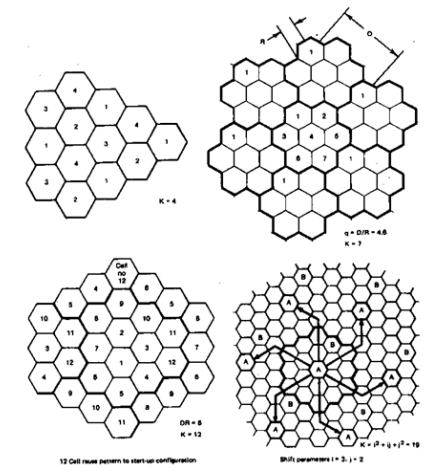Explain the concept of frequency reuse channels
1. Explain the concept of frequency reuse channels.
Concept of Frequency Reuse Channels: A radio channel consists of a pair of frequencies one for each direction of transmission that is used for full-duplex operation. Particular radio channels, say F1, used in one geographic zone to call a cell, say C1, with a coverage radius R can be used in another cell with the same coverage radius at a distance D away.
Frequency reuse is the core concept of the cellular mobile radio system. In this frequency reuse system users in different geographic locations (different cells) may simultaneously use the same frequency channel (see Fig.1.). The frequency reuse system can drastically increase the spectrum efficiency, but if the system is not properly designed, serious interference may occur. Interference due to the common use of the same channel is called co-channel interference and is our major concern in the concept of frequency reuse.
Frequency reuse scheme: The frequency reuse concept can be used in the time domain and the space domain. Frequency reuse in the time domain results in the occupation of the same frequency in different time slots. It is called time division multiplexing (TDM). Frequency reuse in the space domain can be divided into two categories.
1. Same frequency assigned in two different geographic areas, such as A.M or FM radio stations using the same frequency in different cities.
2. Same frequency repeatedly used in a same general area in one system - the scheme is used in cellular systems. There are many co-channel cells in the system. The total frequency spectrum allocation is divided into K frequency reuse patterns, as illustrated in Fig. 2 for K — 4, 7, 12, and 19.
 |
| N- cell reuse pattern |


